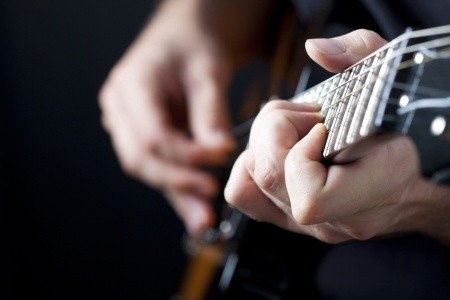This question came up on the rec.music.makers.guitar.jazz newsgroup and I realized as I was answering it, that it would be a valuable post for many guitar students. Here’s how I’ve taught this for years and it works!
1) Start off with REALLY simple material. The good old Mel Bay Books or the William Leavitt 123 Complete are a good place to start. After that, try moving up to more advanced material (classical pieces, jazz guitar chord solos, etc.)
2) Go SLOW at first. Every time you encounter a chord, DON’T start trying to put your fingers on the notes one at a time. Instead, quickly read ALL the notes bottom to top (or top to bottom) and VISUALIZE how this is going to lay on the fingerboard. THEN play the WHOLE chord.
3) Another really good way to learn this kind of visualization can be done away from your instrument. Go through one of the method books and make a flash-card for each new chord you encounter. On the front of the card write just the notes on the staff. On the back of the card, make a fretboard diagram. Practicing with these AWAY from your instrument will teach you to quickly see chords on the staff and VISUALIZE them on the guitar. I’ve made a handy form you can use for this purpose which you can download Guitar Chord Flash Cards. Take it to a Staples or Kinkos and have it printed front and back on a decent card stock and cut it into cards (it’s laid out 9 cards to a page). Then just fill in the notes on the staff and the diagrams on the back.
I hope that this takes the mystery out of reading chords. It’s not magic! Just visual pattern recognition. To avoid frustration, start SIMPLE. Master one group of chords (say a half-dozen) so that you can recognize them INSTANTLY when seen on the staff. Then build on that as you go along. You can try doing things like writing your own song or solo using the chords you’ve learned and in a little while, they’ll become like familar old friends!
Photo Copyright: erika8213 / 123RF Stock Photo

